Who will Build the next 10,000 DAOs?
Our latest research into the next wave of DAO builders: 🤖 🦄 😎
Aragon
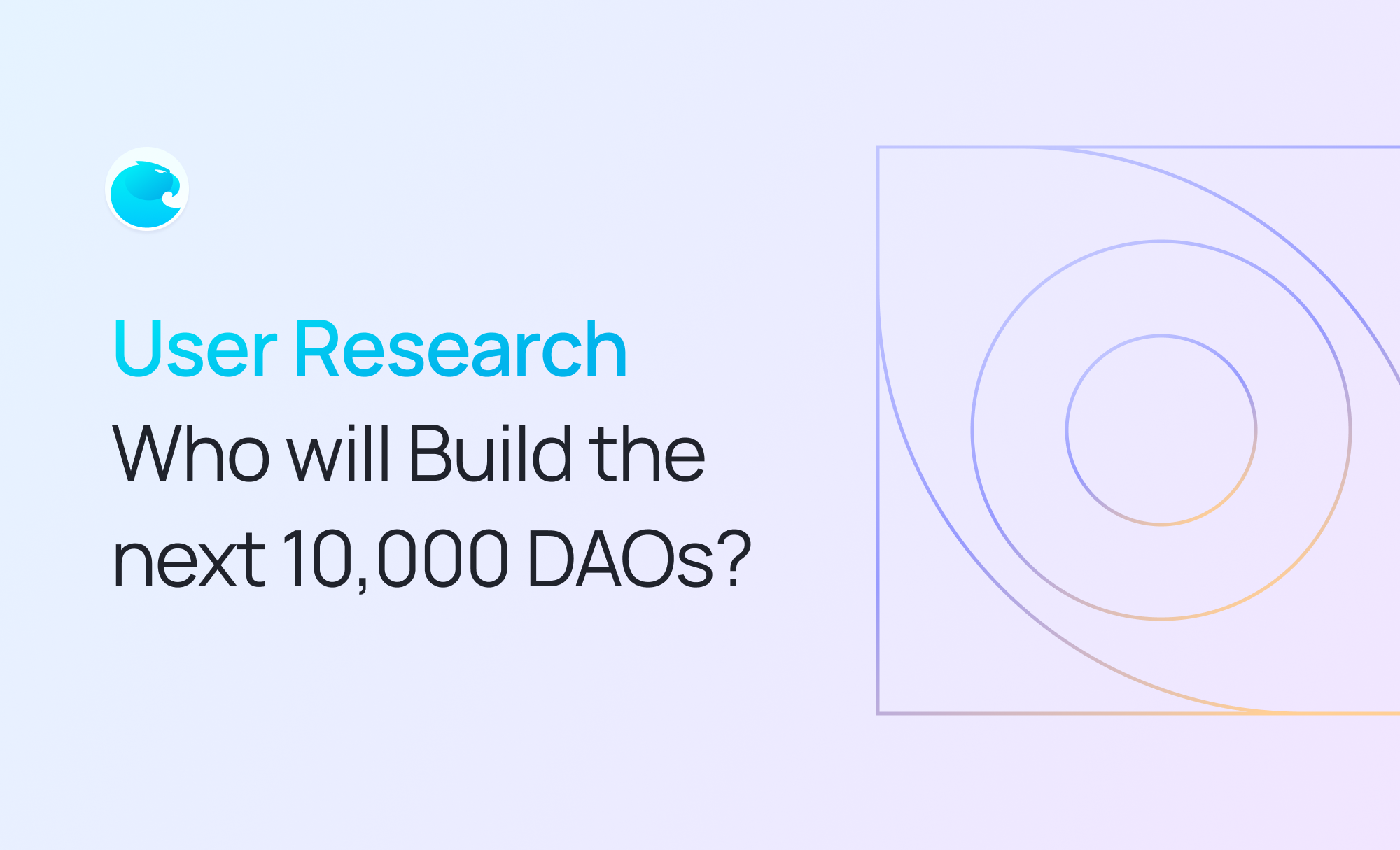
In our last research update, we expounded three design principles that emerged from our data analysis and conversations with DAOnauts: simplicity, modularity and adaptability. In our latest round of research, we’ve identified three personas that typify who will build the next 10,000 DAOs, and, consequently, who we are building for.
As with any new technology, only those working at the frontier have the opportunity, interest, and determination to risk their capital to test it. These are the people who built the first 1,000 DAOs themselves. They naturally focused on solid bets like DeFi and infrastructure, but also on emergent phenomena like NFTs.
As DAO platforms and tooling has improved, the adoption curve has steepened and 2021 saw an explosion of diversity within the ecosystem. This second wave built upon the first with investment clubs, VC DAOs, gaming guilds, service DAOs, and art & music creators tokenizing their communities. The third wave is likely to be even more granular. It will encompass decentralized science (dSci), talent platforms, and even more tokenization of real-world assets, but it will also include next-generation versions of the first and second waves, such that the waves will eventually be indistinguishable from each other. By the break of the third wave, DAOs are prolific, tooling is extensive, and we can start to think about mass adoption. (For more on the taxonomy of DAO types, refer to DeepDAO’s definitions here).
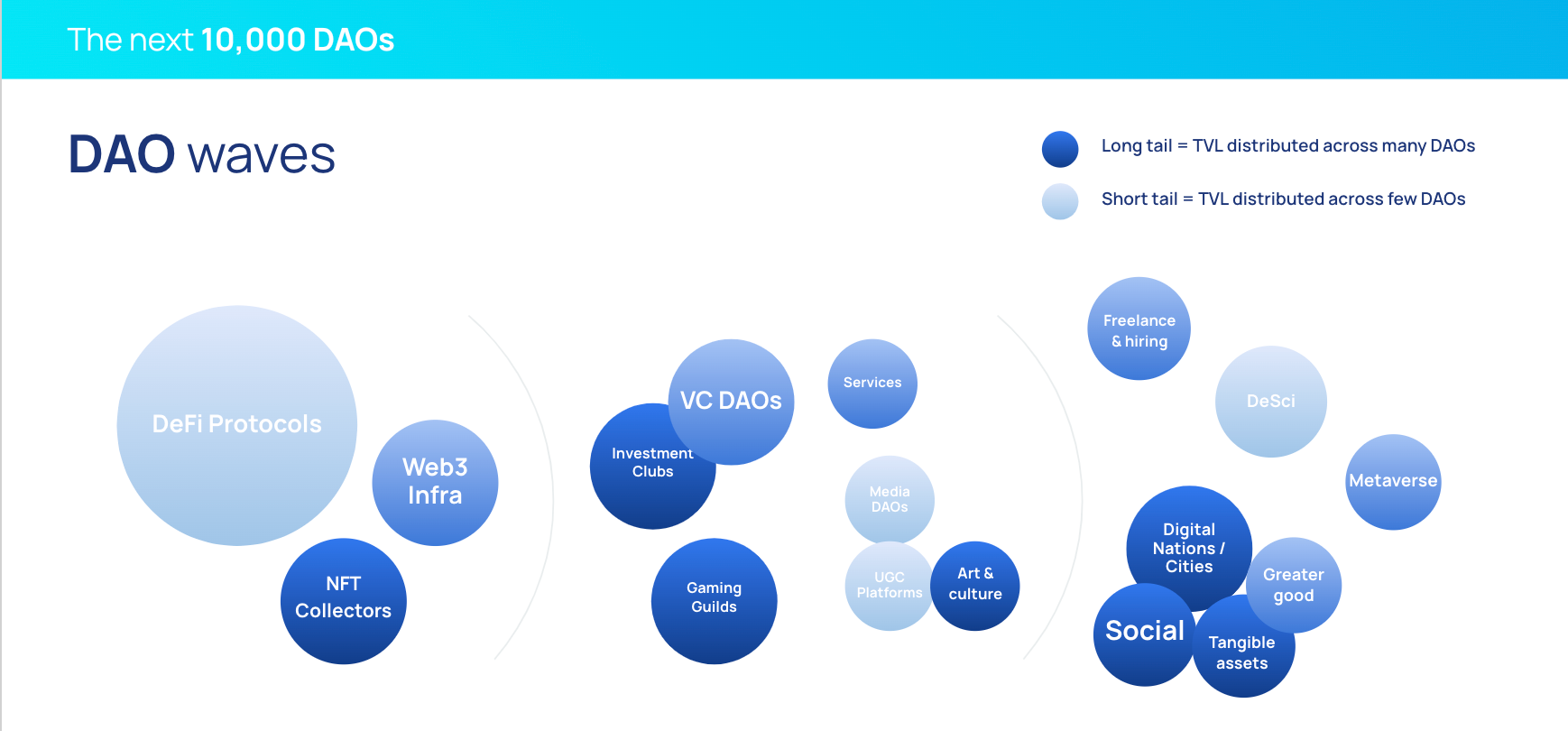
Over two weeks, our research team conducted in-depth interviews with 12 of these third-wave DAO founders, whom we are referring to as ‘Intermediate Builders’. From the data gathered during those interviews, we were able to see distinct clusters of characteristics that represent clear trends among them. We then subdivided the group into personas to represent their differing mindsets and approaches.
Before we dive into their differences, Intermediate Builders share the following traits:
- First-timers: not DAO experts, but already actively participating in DAOs and sophisticated enough to bridge the gap to mass adoption.
- Have a vision of something that is possible with blockchain tech that would have been difficult within the constraints of their prior (traditional) industry.
- Worried that their DAO will be trapped within an inflexible or unsuitable initial setup.
Three subsets of the group had distinct approaches to these key issues:
- What ‘autonomous’ meant to them.
- How willing they were to experiment.
- The level of community that they had built before starting their journey.
We call them, the Tinkerer, the Visionary, and the Producer.
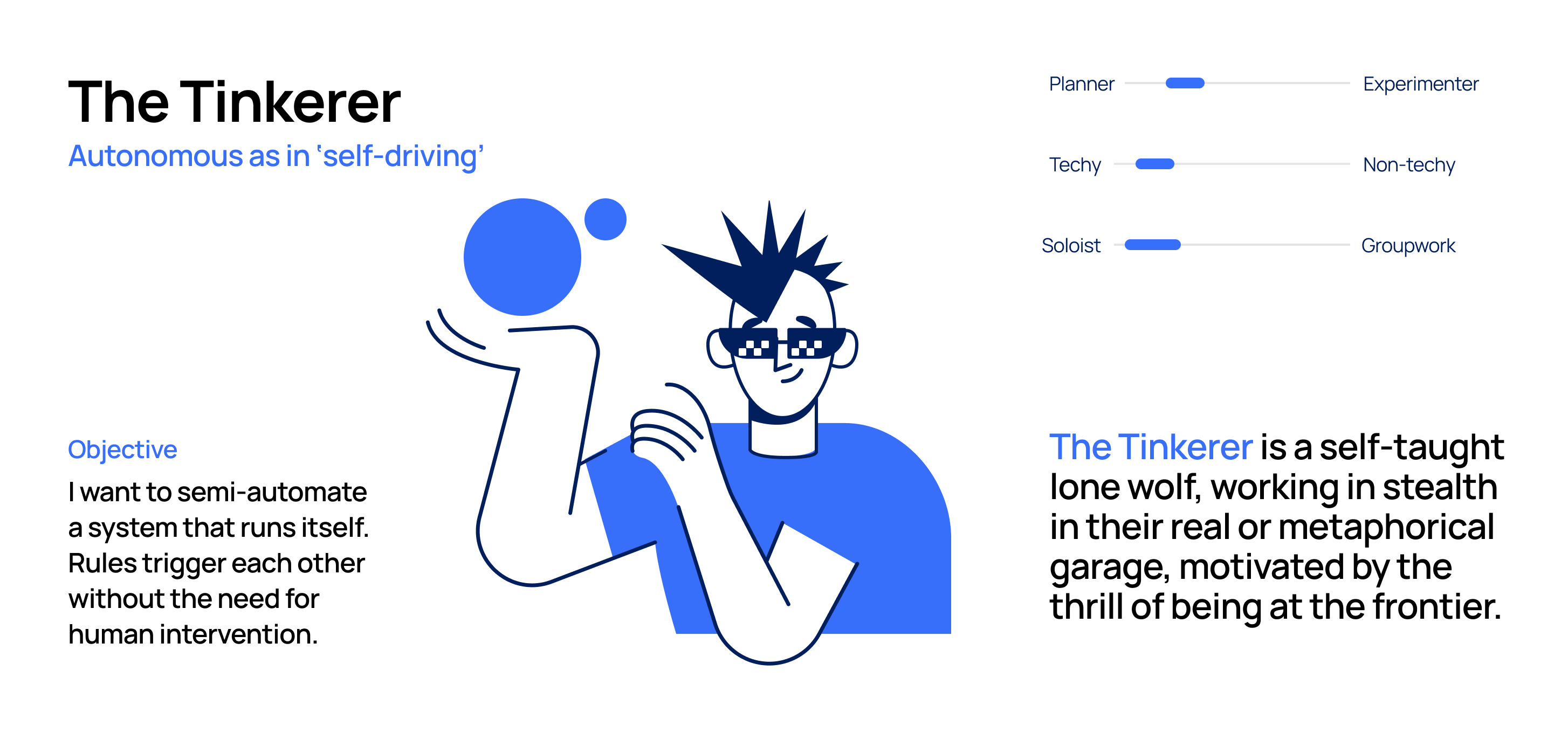
The Tinkerer 🤖
Character
The Tinkerer is a self-taught lone wolf, working in stealth in their real or metaphorical garage, motivated by the thrill of being at the frontier. They have a technical background - perhaps as a data scientist or systems engineer - but may not be a full stack developer or have the experience of Solidity to build their own DAO tooling.
The Tinkerer’s approach to building is to perfectly conceive the end result before doing a comprehensive analysis of all design choices (tokenomics, governance, etc), think about different scenarios and ascertain which is optimal. This leads to a determination to customize tools if they aren’t perfectly suitable, as long as it serves their objective. The only fear is that the end product will fall short of the Tinkerer’s expectations, either because it’s not possible with the existing tools, or because they weren’t able to surmount the technical challenges.
Process
Tinkerers typically take 3-6 months to research the best way to build their DAO, first working out the optimal system design, and then whether it can be achieved. It will only be launched when it is 100% ready. Preparation will involve gaining a broad understanding of the ecosystem, as well as deep dives into DAO tooling solutions, but will be constrained by the quality of documentation and assistance that’s available.
Objective
“I want to semi-automate a system that runs itself. Rules trigger each other without the need for human intervention”.
The Tinkerer is someone for whom ‘Autonomous’ means as little human intervention as possible: they want to create an 'algorithmic’ organization that runs itself, much like a self-driving car. This might be in pursuit of trustlessness or because they want decision-making to be gamified in some way. Invariably, this results in the DAO’s design becoming quite complex.
The objective that the Tinkerer is working towards could be described as a ‘perfect system’: a bespoke, hyper-scalable organization that could grow extremely rapidly if the founding intuitions and decisions were correct.
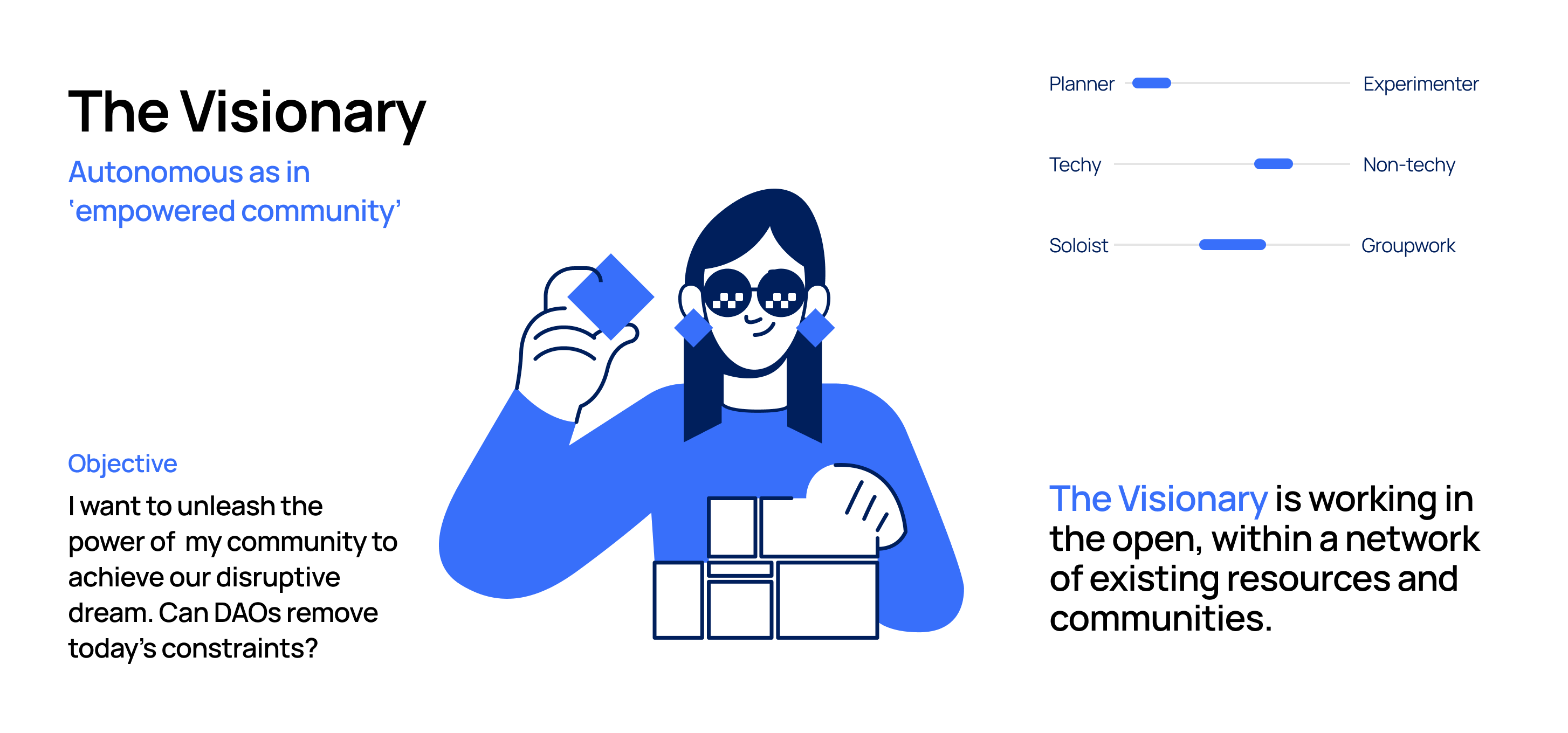
The Visionary 🦄
Character
In contrast to the Tinkerer, the Visionary is working in the open, within networks of existing resources and communities. They are inspired by a big, purposeful idea that wouldn't be able to raise funds from traditional sources.
A Visionary may already be a web2 entrepreneur, seeing the opportunity in web3 and looking to leverage their existing client / community base; or otherwise in a position to spot potential synergies between previously unrelated fields. Either way, their knowledge is paired with a disruptive vision and a delight in bringing experts and communities together in pursuit of that vision.
Beneath the surface, the Visionary is in a precarious position as a figurehead for the project, but highly dependent on others to bring it to pass. In that state, they are conscious of being out of their depth, concerned not to disappoint stakeholders and worried about the high price of failure.
Process
Although the Visionary will learn by following established paths, such as joining a leading DAO, they would much rather defer to expert opinion, rather than attempt to master the field themselves. This approach extends to the DAO, which will be assembled by the Visionary around a broad - yet inspiring - mission, but then largely left to figure out the details itself.
Objective
“I want to unleash the power of my community to achieve our disruptive dream. Can DAOs remove today’s constraints?”
For Visionaries, ‘Autonomous’ means the freedom to achieve an ambitious, disruptive vision that will change the status quo (in social purpose or competitive advantage).
Because Visionaries are likely to be collaborating with regular folks (and their money) from web2 and offline organizations, the final DAO needs to have a clear plan and security that reassures that audience. Its measure of success will be the degree to which it releases the potential of the community it was designed to serve.
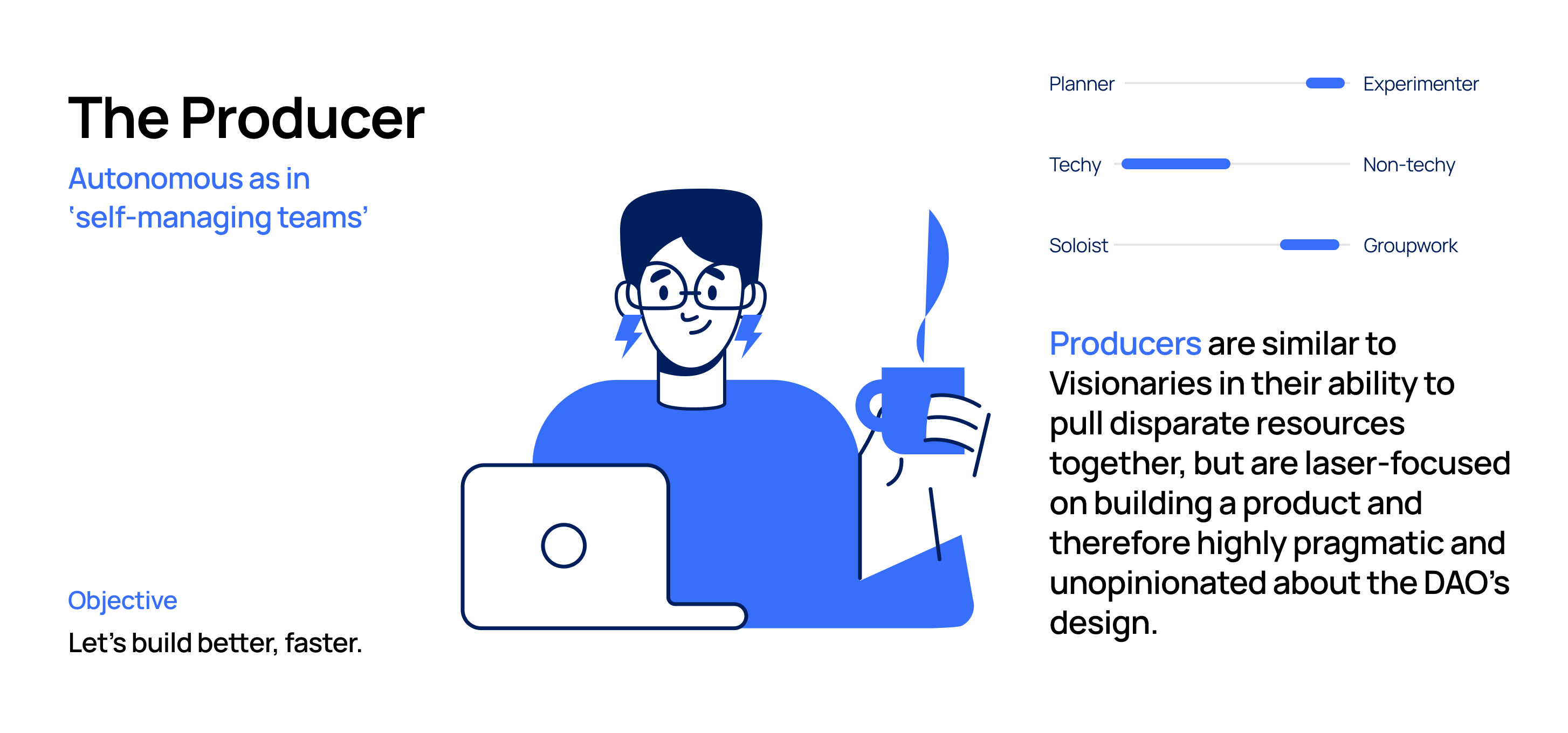
The Producer 😎
Character
Producers are similar to Visionaries in their ability to pull disparate resources together, but are laser-focused on building a product and therefore highly pragmatic and unopinionated about the DAO’s design. They might have experience of launching products at a top tech company, but not necessarily the desire to run a business themselves. For that reason, they are ultimately looking for a way to build quickly before exiting and moving on to the next venture.
Producers are driven by the thrill of building something big and fast in web3 with an inspiring team. In opposition to that, they worry about wasting time on tooling, legal constraints or any kind of community malfunction.
Process
The Producer’s ideal process resembles that of a lean startup, beginning with a small core team and building a strong following, iterating the product and community as they go. They hope that decision-making will eventually be led by the wisdom of their crowd, but starts out with the Producer’s oversight and day-to-day involvement.
Objective
“Let’s build better, faster.”
For the Producer, ‘Autonomous’ means a self-managing organization that will flourish even after they have moved onto their next project.
Of the three personas, Producers are the most product-centric, so most likely to build something with obvious utility that is managed by a DAO, rather than a DAO for its own sake. That product could be - but is not limited to - infrastructure, a DeFi protocol, or an NFT project. It will usually launch as a minimum viable product (MVP) first, before iterating and pivoting as the market dictates.
Which Persona are You?
The second wave of DAOs has made the idea of decentralized organizations an essential component of the web3 narrative. The Intermediate Builders who will power the third wave will be the ones to turn DAOs into household names.
As a group, they all aspire to decentralization, but have distinct interpretations of ‘autonomous’ as individuals and differ in their approaches to building.
Like most technologies, DAOs are a new solution for old problems, which is what the Tinkerers, Visionaries and Producers will be striving to solve. The personas are all sophisticated in their own fields, but run into obstacles with the currently complex nuts and bolts of DAO tools. Therefore, Aragon and the wider industry have a big part to play in making these tools accessible and easy to use; something that is front and center of our product strategy.
So, which persona are you? However you answer, we would love to know the obstacles you are facing as a DAO creator so please make your voice heard via our 2-minute questionnaire. This will help us to map personas to specific needs and accelerate those next 10,000 DAOs! 🤖 🦄 😎
Research Questionnaire--
Aragon is building the future of decentralized governance for Web3 communities & organizations. Deploy a DAO on Aragon Client or Aragon Govern, manage your community on Aragon Voice, resolve disputes in Aragon Court and run enterprise-level votes on Vocdoni, all within our open-source stack. See the latest at aragon.org, subscribe to our monthly newsletter, join the conversation on Discord, or follow us on Twitter.
Docs | YouTube | Telegram | Github | Reddit | Linkedin | Forum
Subscribe to The Eagle for weekly news on the Aragon Network
